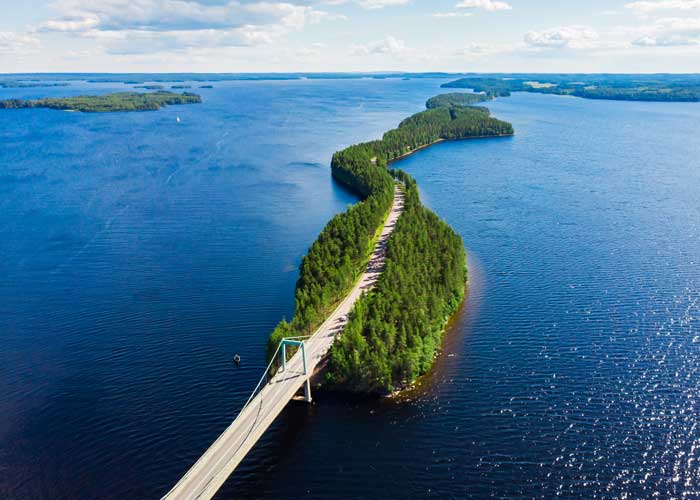Ecuador’s Cloud Forests: 13 Things to Know (Travelers Guide)
Sure, Ecuador has the Amazon rainforest. But have you heard of the cloud forest in Ecuador? In this article, you’ll learn about Ecuador’s cloud forests, what to see, where to find them, and how to prepare for your trip.
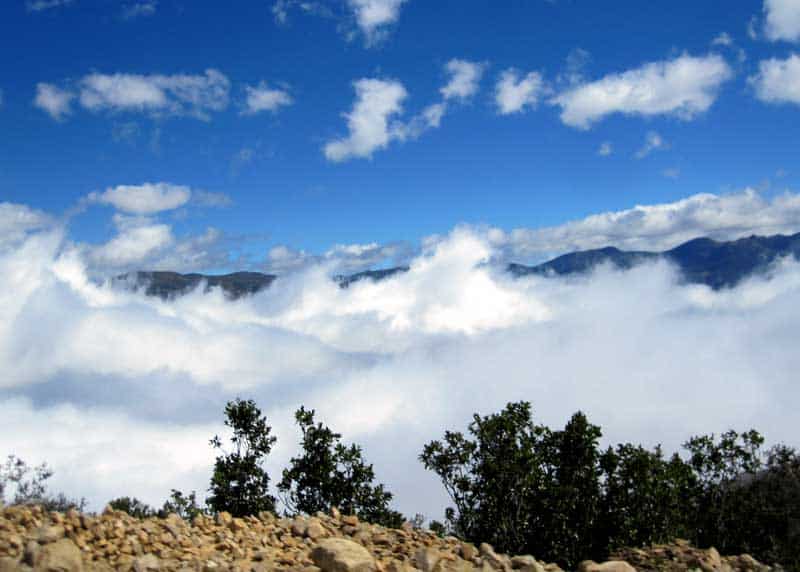
Cloud Forests in Ecuador: 13 Things to Know
1. What is a cloud forest?
If you are going to visit a cloud forest, it would be useful to know what a cloud forest actually is. Another name for a cloud forest is a tropical montane forest.
As opposed to lowland rainforests, cloud forests occur at higher elevations, literally up in the clouds. As such, they are often very foggy, mossy, and abundantly green.
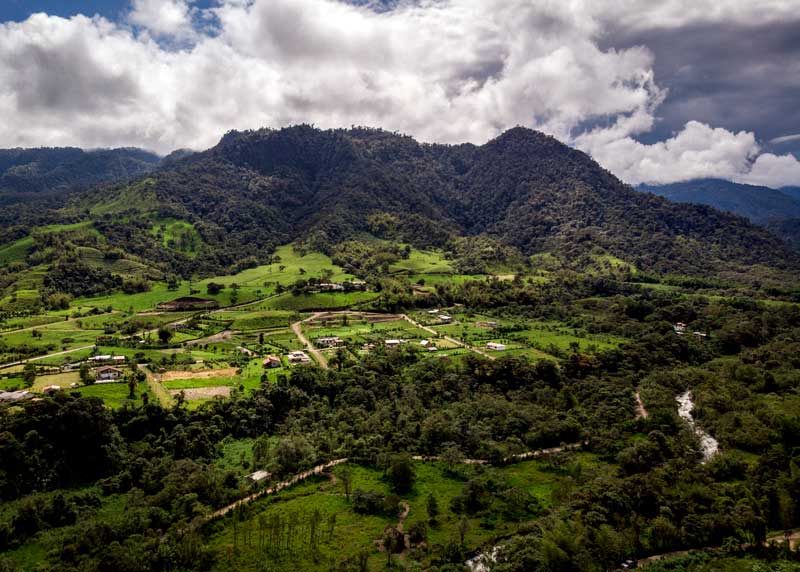
2. Where can you find cloud forests in Ecuador?
Cloud forests in Ecuador can be found all through the Andean mountains. From north of Quito to south of Vilcabamba, near the border with Peru.
The mountain slopes catch the air as it rises off of the Pacific Ocean, resulting in lush and verdant jungles.
Cloud Forest Map
Check out the map below for cloud forest locations throughout Central and South America.

The map of the montane and subalpine cloud forest zones in Central and South America was produced by Eileen H. Helmer of the U.S. Forest Service. Along with other researchers, she published this research article about neotropical cloud forests, which contains the above map.
As you can see on the map, Ecuador has a wide band of cloud forests running north and south, along the Andes mountains.
3. 12 Cloud Forest Parks and Reserves in Ecuador
Here are the names of some of the cloud forest parks and reserves in Ecuador.
Some of them are National parks, while others are privately owned and operated.
| Name of Park | Distance from Quito | Park Website |
| Bellavista Cloud Forest Reserve | 47.3 miles (76.2 km) | bellavistacloudforest.com |
| Buenaventura Reserve | 24.5 miles (39.5 km) | jocotoco.org |
| Cayambe Coca Ecological Reserve | 42.8 miles (68.8 km) | National Park Site |
| El Pahuma Orchid Reserve | 34.7 miles (55.9 km) | ceiba.org |
| Los Cedros Biological Reserve | 73 miles (118 km) | loscedrosreseve.org |
| Mashpi Reserve | 69.6 miles (112 km) | mashpilodge.com |
| Maquipucuca Cloud Forest Reserve | 52 miles (83.7 km) | maquipucuna.org |
| Mindo Nambillo Cloud Forest | 63.4 miles (102 km) | mindocloudforest.org |
| Pacha Quindi Nature Refuge | 46.1 miles (74.2 km) | Facebook Page |
| Reserva Las Tangaras | 63.4 miles (102 km) | Facebook Page |
| Tandayapa Bird Lodge | 43.6 miles (70.1 km) | tandayapabirdlodge.com |
| Santa Lucia Cloud Forest Reserve | 38.2 miles (61.4 km) | santaluciaecuador.com |
Here’s our guide to Ecuador’s 11 National Parks and 25 Reserves and Refuges
4. Is it easy to drive to a cloud forest? Are the parks accessible?
Given that part of the definition of a cloud forest means that it has to be at least partway up a mountain, it can be a bit of a challenge to get to one.
I’ve included the distance from Quito (as that is likely where you fly in to) as a guide.
Keep in mind that some of these roads are twisty-turny, so you might have to drive slower than you would expect. And the driving in Ecuador might be different than you’re used to.
But how easy it is to get to, really depends on the particular park. Some can be driven to with relative ease. Others are so remote that you have to take a variety of transportation methods.
Your energy level may influence what you are able to do within the park.
Some of them have beautiful lodges (see the links above, especially recommended are Bellavista Lodge, Mashpi Lodge, and Maquipucuna) where you can stay in comfort and watch the birds.
Other activities cater toward robust and adventurous people (see point 11).
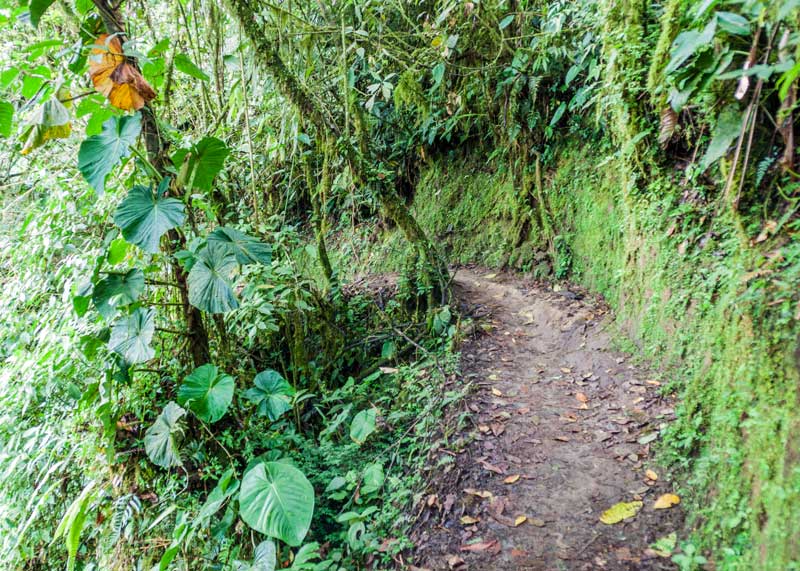
5. Is there a cost of admission?
The best way to experience a cloud forest is with a tour guide. This can be as part of a guided hike, or as part of a multiple-day adventure with overnight accommodations.
How much it costs, really depends on what you want to do, but you should expect to pay a park entrance fee at a minimum.
6. What is the climate like in a cloud forest? What should I wear?
Firstly, be prepared for high humidity, which averages at 95% throughout the year. There is some variation in rainfall as Ecuador has a rainy season (from late October to early June), and a dry season (from late June to early October).
During the rainy season, expect rain every day, especially in the afternoons. In the dry season, there is less rain, but still a fair amount of clouds and fog.
Temperatures vary between 52°F (11°C) overnight and 77°F (25°C) during the day.
So what should you wear? In short, clothes that are moisture-wicking and dry quickly. Heat rash is real and very unpleasant.
Long pants are a good idea, as you never know what you will brush up against. You’ll also want hiking boots with good traction, or even rubber boots. And don’t forget your sunhat.
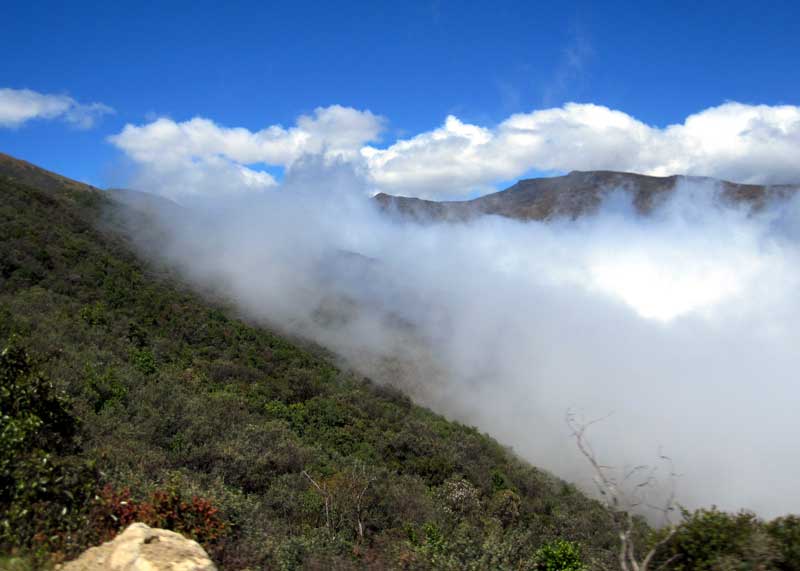
Check out our Annual Climate Charts for Ecuador
7. What else should I bring?
- Water bottle and snacks, if going on a hike (for yourself, it is very important that you do not feed the animals)
- Sunscreen (even though it may be foggy, the sun at the equator is very strong)
- Camera
- Binoculars
- Waterproof bag for your gear
- Rain coat or poncho
8. What animal species are in the Ecuadorian cloud forests?
This is where a guide comes in handy, and lots of patience, as the animals here are very good at hiding.
If you’re observant and happen to be in the right place at the right time, you may be able to spot a puma, a spectacled bear, an Andean coati (a raccoon-like animal), sloths, howler monkeys, armadillos, anteaters, or a tayra (from the weasel family).
Some reserves organize night tours, which give you a better chance of seeing nocturnal animals in action. I wouldn’t recommend doing this without a qualified tour guide.
There are also lots of amphibian and reptile species to keep an eye out for.
9. What birds should I be on the lookout for?
The Andean slopes in Ecuador are home to an estimated 550 species of birds, including 35 different hummingbirds.
Here are some of the unique birds you can see here:
- Black-Chinned Mountain-Tanager
- Golden-Headed Quetzal
- Plate-Billed Mountain-Toucan
- Violet-Tailed Sylph
- Cock-of-the-Rock
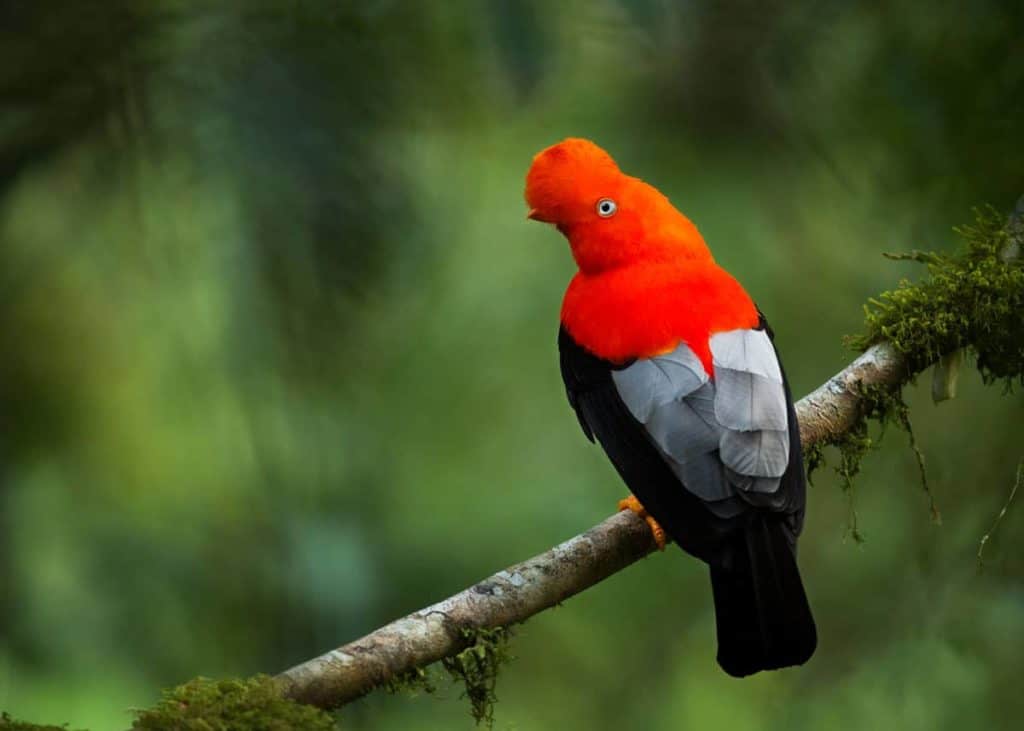
10. What about plant varieties, and orchids?
If you like orchids, you will love the cloud forests of Ecuador as they are home to over 4,500 species of orchids! The humid environment is perfect for them to grow.
The lush forest is also home to lots of air plants, ferns, and mosses.
Other flora includes elephant ear plants, bromeliads, cecropia trees, heliconias, and copal trees.
While you are looking at the flowers, you’ll likely notice the abundance of butterflies, including the blue morpho.
11. Are there adventure sports?
There are lots of things to do if you really want to get your adrenaline going.
There are tour packages that offer transportation from Quito and offer adventures like ziplining, river tubing, horseback riding, and swimming under waterfalls. Look for these tours in the Mindo area.
If you’re looking for something adventurous, but not too wild, Mashpi Lodge offers a gondola tour for up to 4 people.
12. Is there chocolate?
Perhaps the most important question of them all: Is there chocolate? And the answer is Yes!
In the Mindo area, you can go on chocolate and coffee tours and see how these items go from the tree to your tummy.
Learn more about the famous Ecuador chocolate. This is one of the best things to buy in Ecuador, before heading home.
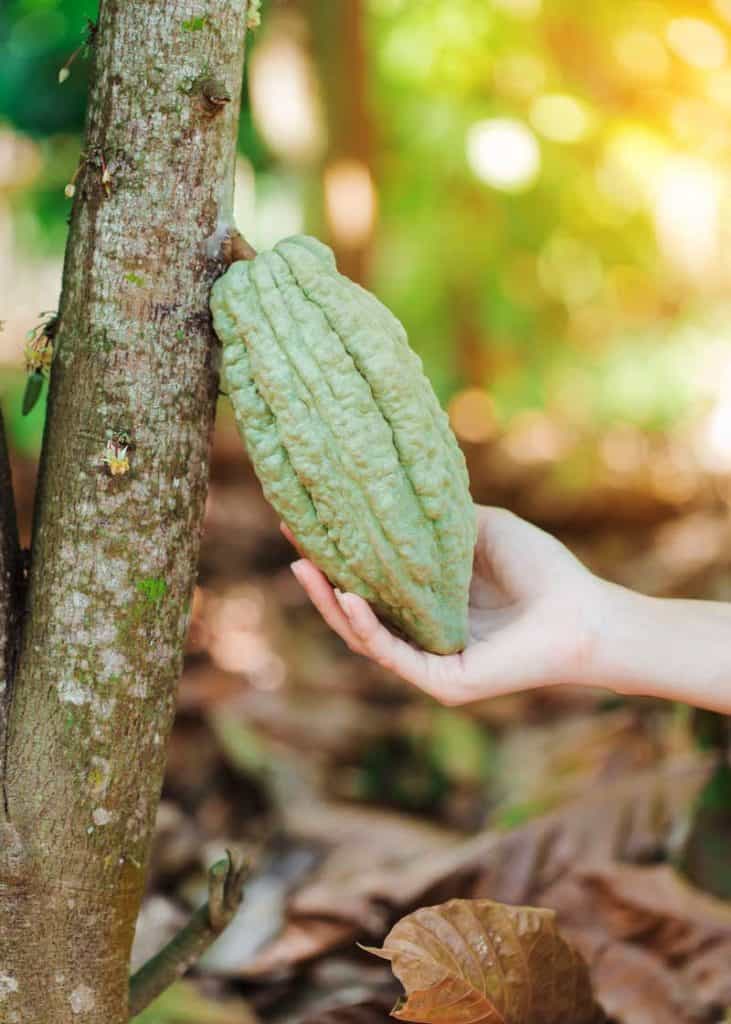
13. Is there anything of archeological significance in the cloud forest?
For a trip back in time, visit Tulipe Pacchijal Cloud Forest. There you will find ruins created by the Yumbo (pre-Incan) civilization.
They are thought to have lived in the area from 800-1660 AD. The site in Tulipe contains petroglyphs, ceremonial mounds, and swimming pools.
Many travelers will visit both Ecuador’s cloud forests and the Amazon rainforest on the same trip. The Amazon is the largest rainforest in the world.
Keep reading: 15 Ecuador Landmarks to Visit
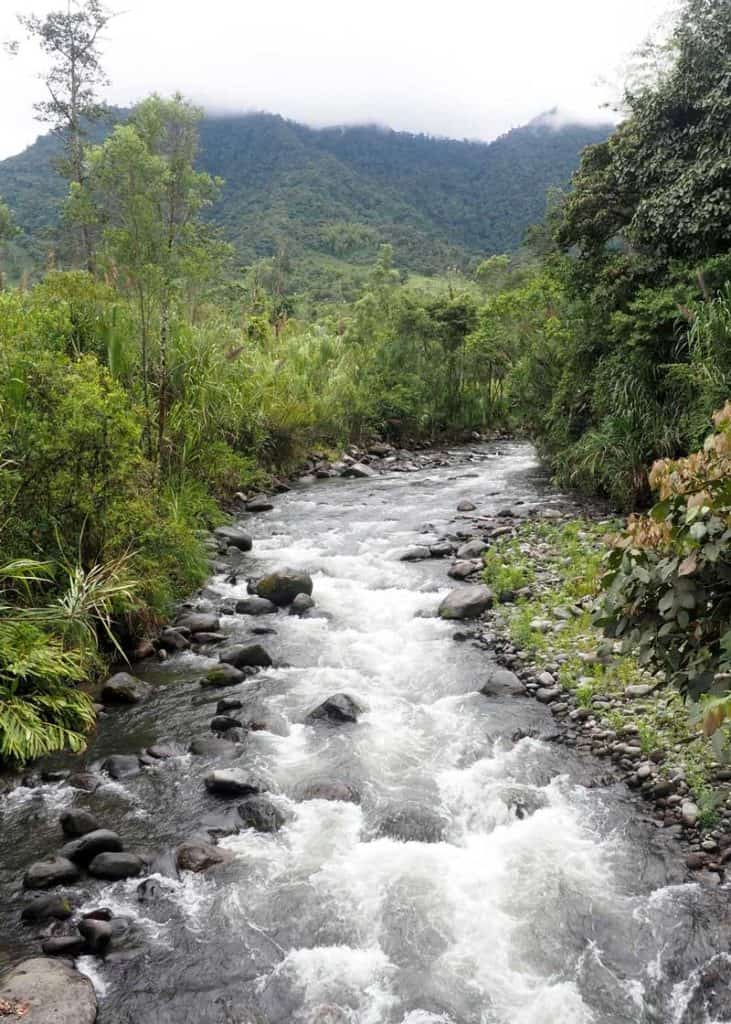
Learn more about the 12 longest rivers in South America.
Your Turn
Have you ever been to a cloud forest? What aspect of them appeals to you? Is there a reserve that I should add to my list? Let me know in the comments below.

